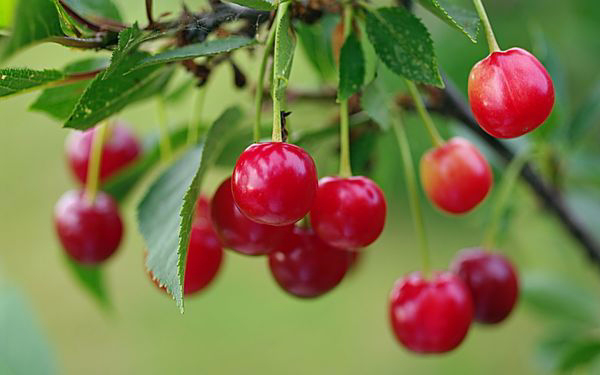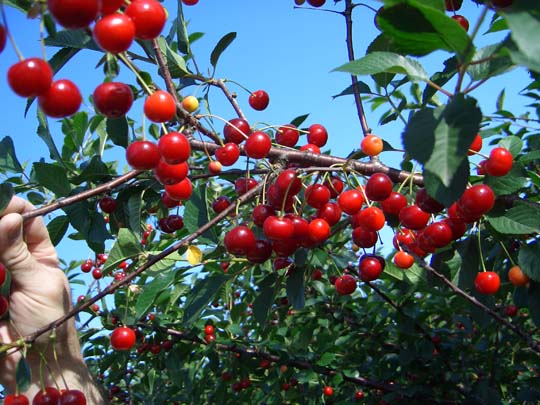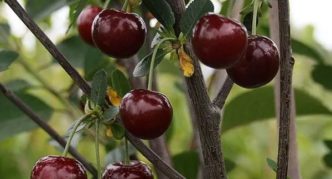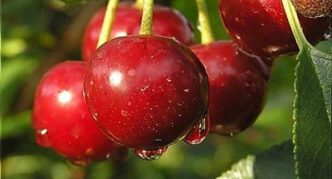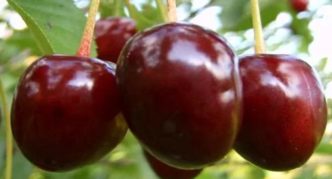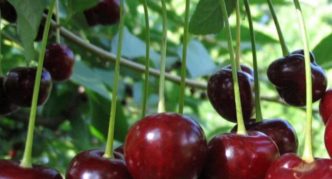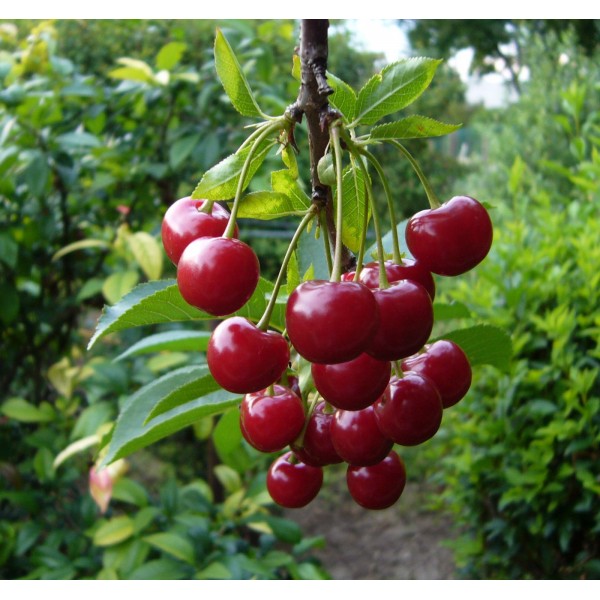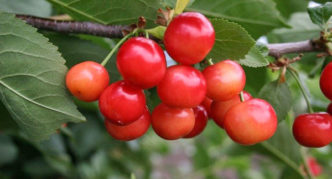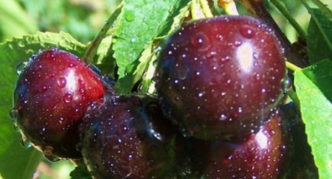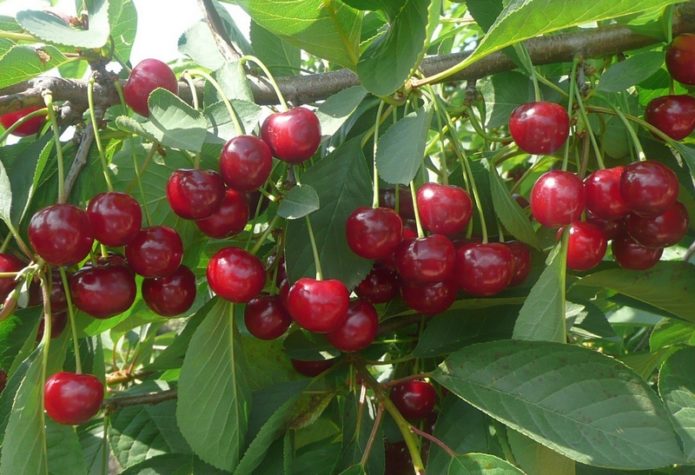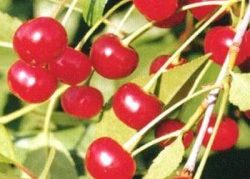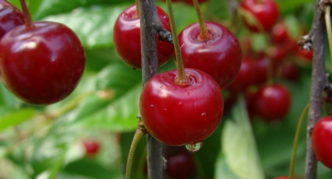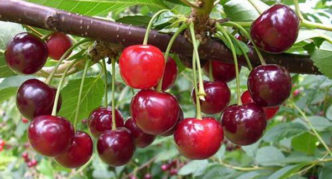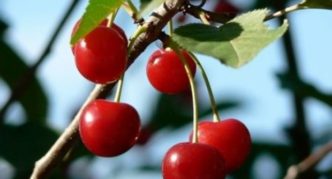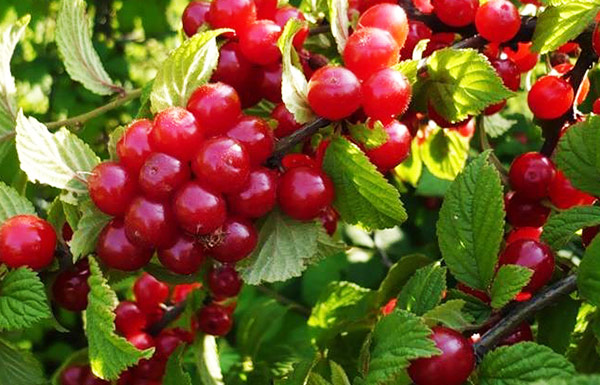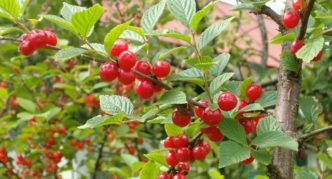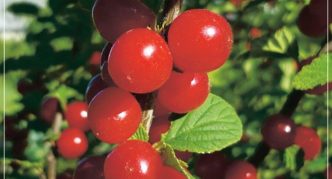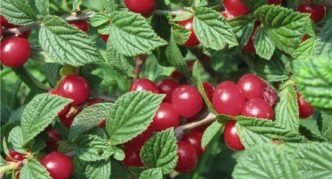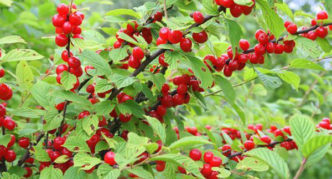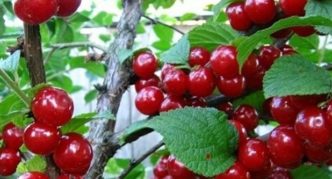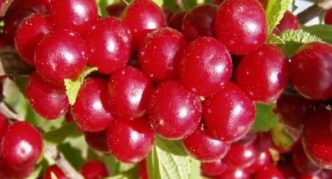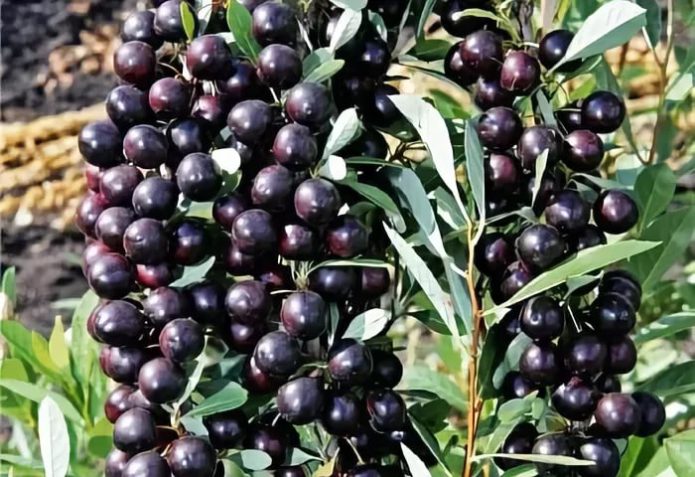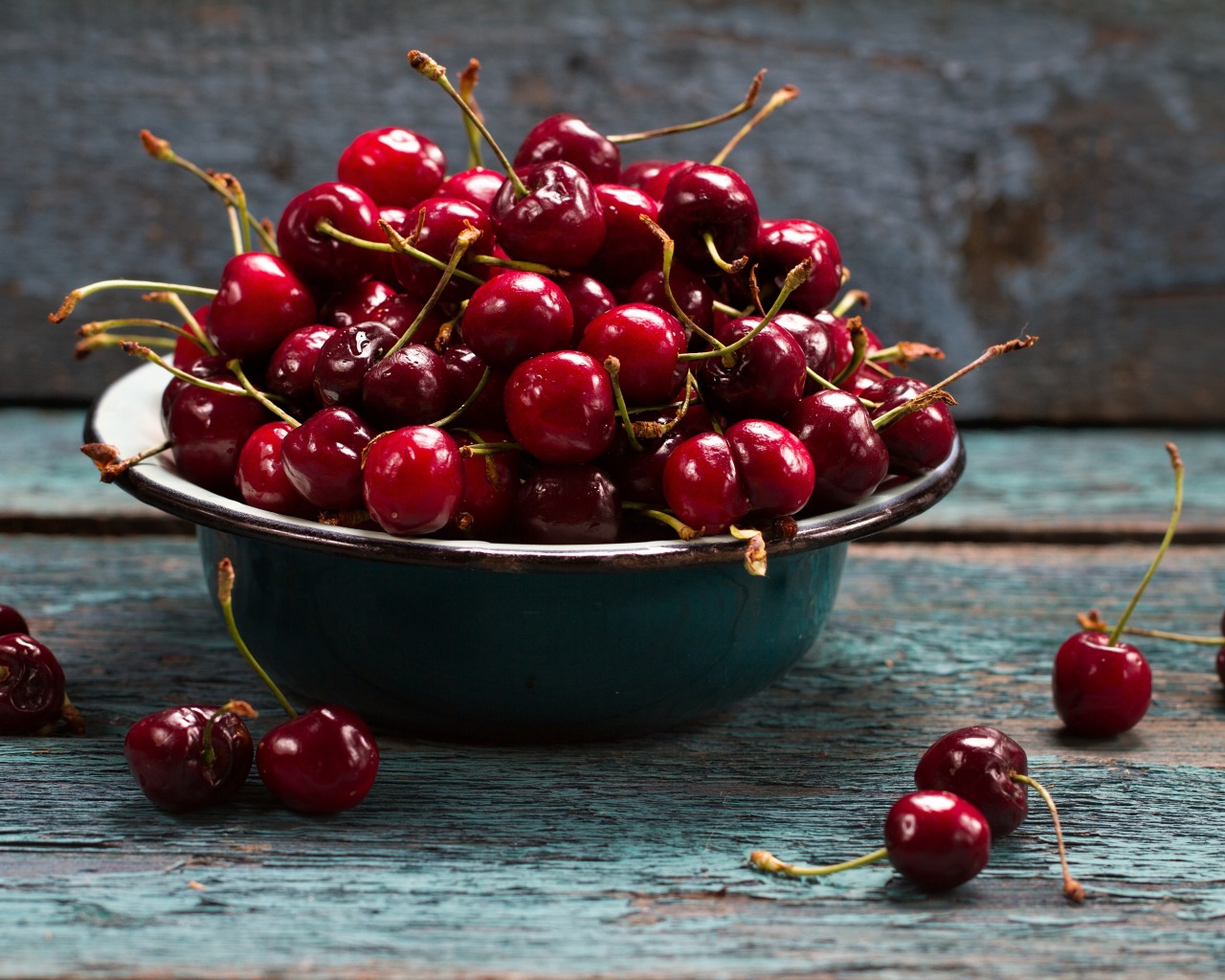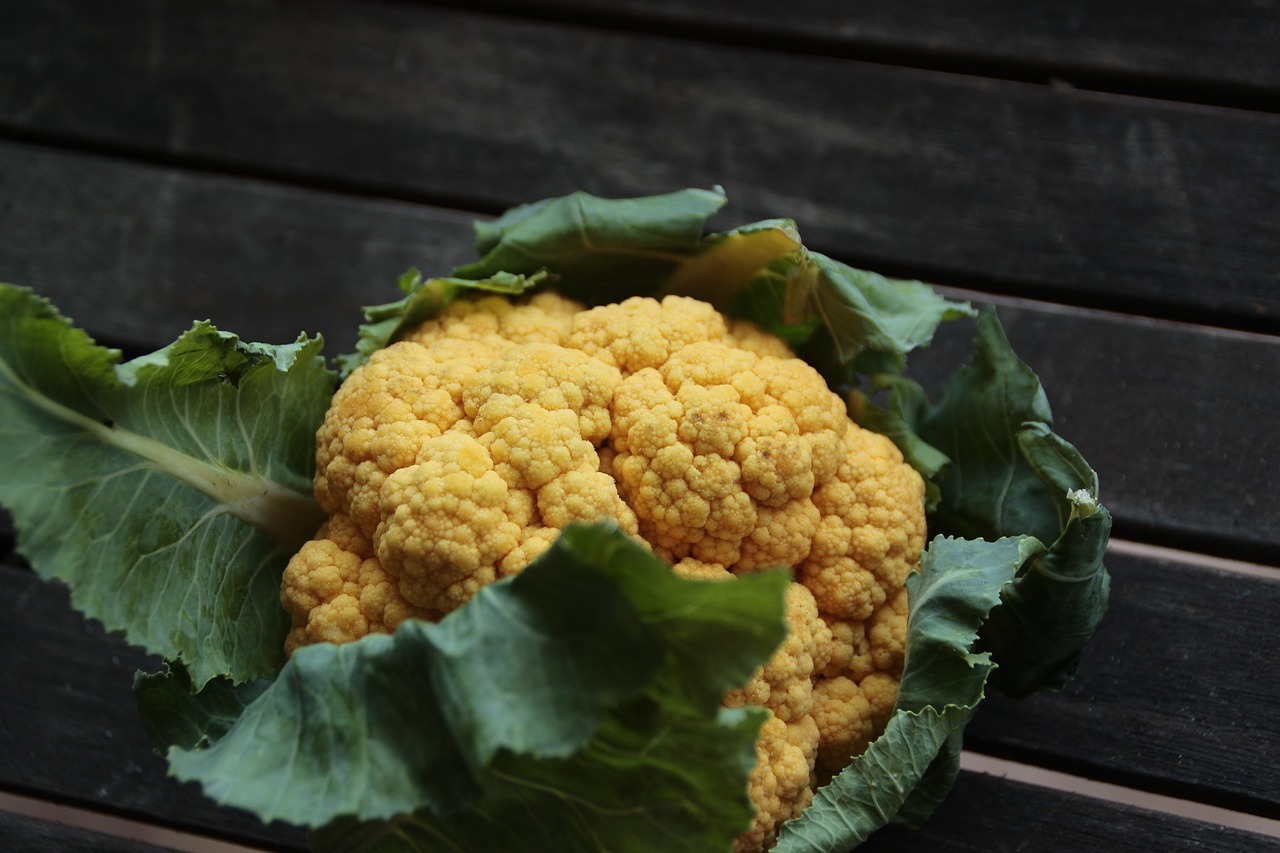Cherry blossom in spring is an unforgettable sight. A white-pink cloud like a magical vision enchants the owners of summer cottages and gives hope for a rich harvest in summer. For expectations to come true, the gardener must choose the right varieties for his climatic zone.
Content
Cherry classification by pollination method
When purchasing a seedling, you need to know that an abundant color in itself does not guarantee a good harvest. Without pollination, less than 20% of flowers will reach the fruit stage. Fruiting in excess of 50% can only be obtained with a paired pollinator. Depending on its type, two large categories of cherries are distinguished: self-fertile and self-fertile varieties.
Self-infertile is a type of cross-pollinated crop that is capable of setting fruits only when adjacent to a plant of another variety that plays the role of a pollinator.
Self-fertile is a variety for which a nearby growing tree of the same variety can become a pollinator.
For both categories, there is a rule for planting trees in arrays of three or four pieces, preferably a whole garden. For a dozen self-fertile trees of the same variety, it is recommended to take at least one plant of a different variety with the same flowering period. In this case, due to the ingress of pollen of another variety on the pistil of a flower, you will receive the maximum number of ovaries (the norm for self-fertile varieties is pollination up to 40-50%, in the presence of other varieties - 10-15% more).
Self-fertile cherry varieties include the following:
- Apukhtinskaya;
- Lyubskaya;
- Zagoryevskaya;
- Chocolate girl;
- Bulatnikovskaya;
- Brunette;
- Youth;
- Assol;
- Volochaevka;
- Memory of Yenikeev.
It is believed that self-fertile varieties are self-sufficient, and they do not require insects or cross-pollination, neither cold weather nor hot heat are terrible. This is partly true. In practice, the garden bears fruit more richly where it is diluted with another variety.
Selection of varieties for the Moscow region and the North-West region of Russia
The climatic conditions of the Moscow region and the North-West region (St. Petersburg, Pskov, Kaliningrad, partly Karelia) are similar in cool summers and relatively warm winters, when the temperature does not drop below -120C. At the same time, a snow cushion is created on the ground in winter, which protects the roots of plants from freezing. However, the varieties cultivated in the southern zone will not take root here due to frequent rains, insufficient sun in summer and frosts in early spring.Therefore, it is important to choose plants suitable for your climate zone.
Benefits of undersized varieties
For regions with cool summer climates, it is better for beginner gardeners to choose undersized cherry varieties. The height of such trees will not exceed 2.5 meters. They yield no less than their tall relatives, but the benefits of growing and caring for them may be much more preferable, especially for summer residents with limited land.
Here are just a few of them:
- Low-growing bushes reach the fruiting stage faster.
- Low bushes take up less planting space: where three undersized ones fit, one tall one can take root.
- It is easier to care for a low tree, do sanitary pruning, and make spring-autumn spraying.
- It is easier to pick berries from trees 2–2.5 meters high.
- The branches on low-growing cherries are practically not afraid of windy weather: in winter they break less often, in spring they will fly less flower stalks.
- The roots of low trees do not reach the groundwater table, which means that they are not threatened with waterlogging and decay.
All these attractive characteristics make the dwarf cherry one of the most popular crops in the region.
Low-growing self-fertile varieties
There are many of them. Often these are varieties that grow like shrubs, with several skeletal branches. As a rule, they all have excellent yields already in the third year after rooting, and grafted specimens - the next year after budding. There are varieties of hybrid with cherries, there are purely cherry varieties. They are united by one thing - regionalized adaptability to weather conditions with relatively cool summers and long spring.
Most popular cultures:
- Lyubskaya. The variety is early maturing. It has been in the state register of cherry crops since 1947. It became widespread only in the 80s of the XX century. It took root almost everywhere: in the North-Western regions of Russia, the Moscow region, the Volga region, the Republic of Adygea, the Rostov region, in the Caucasus. Has a spreading crown. Medium-sized berries weighing up to 5 grams with a blunt top. It tastes sour. The pulp is juicy and tender. The bone is easily removed. Average yield, up to 6 kg from a five-year plant. Fruits are good for making juices, compotes, jams.
- Apukhtinskaya. It is a frost-resistant medium late variety. Fruiting is rich. In the Midwest Russia, it is grown as a bush with several trunks. Has resistance to coccomycosis. Unpretentious to growing conditions. Quite large, dark red fruits ripen, which have a slightly pronounced heart shape. The berries are sweet, but with a bitter aftertaste. 9-12 kg of berries are harvested from a five-year tree.
- Youth. The variety has existed since 1993 and is the result of crossing the Vladimir cherry and Lyubskaya. The tree exhibits moderate resistance to coccomycosis. It is characterized by high adaptability to winter temperatures. Fruiting begins at the age of four on branches of the same age. Bright red fruits ripening in July weigh up to 5.3 grams. Round shape, sour taste. The bone is removed freely. Berries are widely used for conservation. In terms of yield, the variety is quite fertile with an annual frequency.
- Turgenevka, or Turgenevskaya. Cherry is positioned as medium late and partially self-fertile. It was entered in the register of fruit crops in 1979 for distribution in the central regions of Russia. It has established itself as frost-resistant, but does not react well to spring frosts. Yields a harvest only in the fifth year, is characterized as a very productive crop. Up to 25 kg of berries are obtained from an adult plant. Sweet heart-shaped fruits weighing 5 grams or more are harvested in early July. It has an easily detachable bone.
- Bystrinka. It has existed since 2004 and is positioned as a medium-ripening variety. It became widespread in the Central zone of Russia.Fruiting comes in the fourth year. The dark red berries have a sweet and sour aftertaste. Weight - from 3.0 to 3.6 grams. Breeders note its high frost resistance and strong resistance to diseases and pests.
- Zagoryevskaya. Cherry was created specifically for the Moscow zone and regions with a similar climate. Winter hardiness is good, but spring frosts on the soil can damage the flower buds. Then there is a risk of reducing yields to below average values. The fruits ripen at the end of July on last year's growth. The weight of the berries varies from 3.0 to 3.5 grams. The color is maroon, almost brown, the shape is rounded. They are used both for fresh consumption and for conservation.
- Chocolate girl. Partially self-fertile culture. Received by Oryol breeders through crossing of Cherry Consumer goods and Lyubskaya. The countdown has been going on since 1996. The crown of the tree is quite branchy, like an inverted pyramid, which does not allow the branches to touch the soil. This feature reduces the risk of catching bacterial diseases or pests from the ground. The variety is resistant to coccomycosis. The fruiting season includes five-year-old plants that successfully yield crops for 15–20 years up to 20–25 kg per tree. Berries weighing up to 4.5 grams. are distinguished by sweet taste and delicate pulp. Sugar content up to 12.4%.
Photo gallery: self-fertile cherry varieties
- Bystrinka berries have a sweet and sour aftertaste
- Turgenevskaya is a very fruitful cherry, but it yields only in the 5th year after rooting
- The mass of Zagoryevsk berries varies from 3.0 to 3.5 grams
- The taste of Youth berries is slightly sour
The owners of low-growing self-fertile cherries are very happy with their choice.
Reviews
My enthusiastic praise for the varieties Molodezhnaya and Shokoladnitsa. I use the Vladimirskaya variety as a pollinator for them. All of them are self-fertile, undersized. The berries are delicious, the size is large. We compete with the goldfinches, who will eat faster. But last year there were recurrent frosts, so Shokoladnitsa gave a minimum harvest. But the Youth was all in berries.
I have two Turgenevka trees. It has been bearing fruit for the third year already. And she began to bear fruit in the fifth year. We will not get enough of this cherry. Winter-hardy, quite resistant to coccomycosis and moniliosis, although we do not leave it without treatments. Large, fragrant fruits of dark cherry color. Excellent jam, wonderful compotes, perfect for freezing for winter use. Pies dumplings - the highest class. And how productive it is! If there is a good pollinator next to Turgenevka, and it can be any sweet cherry, or Lyubskaya cherry, then the harvest at Turgenevka is such that the branches fall on the ground. She has the peculiarity of blooming and harvesting with garlands.
Tall and medium-sized varieties
As the name suggests, these trees are tall, starting at 3 meters and sometimes exceeding 7–8 meters.
This group includes:
- Robin, variety with a spherical crown and fruit weighing 3.5-4 grams;
- Assol, who received a tasting score of 4.7, confirming the bright taste of her berries;
- Griot Moskovsky, cherry with dark red berries, specially zoned for the Midwest Russia;
- A toy, winter-hardy and drought-resistant cherry, the fruits of which have a delicate taste and juicy pulp.
The most famous variety is Vladimirskaya cherry.
Cherry Vladimirskaya
This legendary culture deserves its own chapter. There is a version that the variety, very beloved in Vladimir, Pskov and Moscow, was brought to Russia by wandering monks from southern countries. For several years scientists-agrarians fought to acclimate this berry to the harsh conditions of the country. And they did it!
Berry, zoned under the Central and North-Western districts, Volgo-Vyatka and Central Black Earth regions, has existed in the annals of selection since 1947.In subsequent years, on the basis of the Vladimirskaya variety, new daughter cherries were bred, such as Izbyletskaya, Vyaznikovskaya, Dobroselskaya, Gorbatovskaya, Morozovka, Ukrainka and others. The term "Vladimirovskaya" began to be applied to them too, thus becoming the name for a whole family of cherries.
The city of Vladimir has a special love for cherries of this variety. It is a symbol of wealth, fertility and prosperity. In 2014, the townspeople, as a sign of respect for the berry, which gives a hefty portion of vitamins to the table, erected an art sculpture in her honor on the central boulevard of the city.
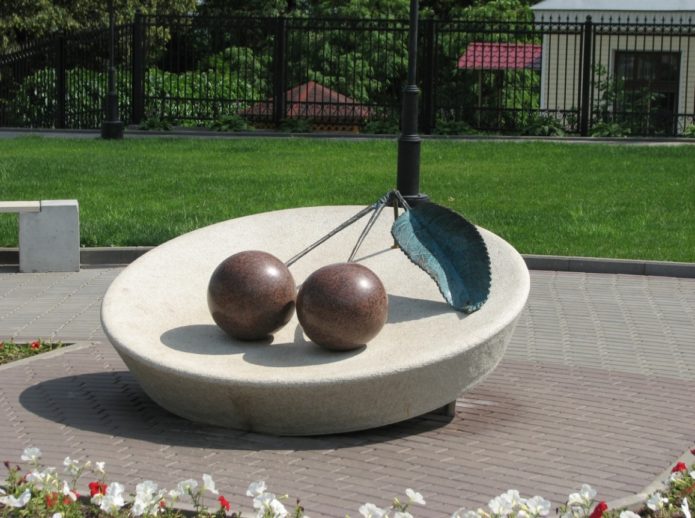
The cherry monument in Vladimir is located on Spassky Hill and is part of the observation deck (opened in 2014)
The tree can be a multi-stem bush or a standard stem with a height of 2.5 to 5.5 meters. Refers to mid-season varieties. The grafted plants are ready for fruiting in the second or third year after rooting. The variety is relatively winter-hardy, but only for zones with winter temperatures not falling below -25about FROM. Frost over -30about C will kill generative buds. Fruiting in the growing zones is noted as consistently high - up to 25 kg of fruits from each bush.
Varieties zoned for Ukraine, middle and lower Volga region
Of course, too categorical divisions between the conditions for growing cherries in the Central District of Russia and the regions of the Volga region and Ukraine should not be made. Both there and here there are similar features of the climate with changeable droughts and rains. So, all of the above-mentioned undersized varieties are suitable for the Moscow region, and for Volgograd, and for Kiev.
Spunk family
However, the region, located in more southern latitudes than the Moscow region, has its own specific varieties. First of all, this is the Shpanka cherry (Ukraine). Spunk is the name of a whole family of cherries, which contains the following varieties:
- Shpunk Bryansk. Cherry is considered an early variety. Its rounded fruits weighing up to 4 grams and soft creamy pulp are highly transportable and are excellent for processing. The yield reaches 30-40 kg of fruits from one tree.
- Donetsk Shpanku, early ripening variety, resistant to weather conditions. The Donetsk variety is the result of crossing cherries Valery Chkalov and Donchanka. The tree enters fruiting maturity in 3-4 years and brings a very decent harvest - 45-50 kg of berries. The size is large, it can reach 8-10 grams.
- Shpanku Kursk, which gives berries of an interesting slightly flattened shape, but small in size - up to 2.5 grams. The variety is self-fertile, therefore it will not yield a crop without a pollinator.
- Shpanku Large-fruited, capable of perfectly tolerating drought and frost. Fruits weighing up to 7 grams are ideal for fresh consumption.
Photo gallery: Spunk cherry family
- Shpanka Donetsk - high-ripening variety
- The Shpanki Dwarf tree does not grow more than 3 meters in height
- Shpanka Kursk is a self-fruitless variety and will not yield a crop without a pollinator
- Large-fruited Shpanki fruits weigh up to 7 grams
The disadvantages of the Shpanka family include, first of all, their high growth - up to 6 meters. This is inconvenient both when spraying the tree against pests and when picking fruits. Other flaws include low self-fertility and difficult pruning.
A separate line should be highlighted by the Dwarf Shpunk. First of all, due to the fact that it, due to its small genes, does not reach the declared height of 6 meters, only up to three meters. At the same time, it is not subject to freezing and can tolerate frosts up to 250C. These qualities allowed the variety to adapt to the warm zones of the Moscow region and the northwest. Fruiting from the fifth year of life. Resistant to fungal diseases. In good years it produces up to 35 kg of fruits per bush.
Variety Meeting
This cherry is also of Ukrainian selection. Adopted for breeding in 1966. The tree has several skeletal trunks up to 2.5 meters in height. The spherical compact shape of the crown allows you to easily pick the fruit.
The meeting belongs to the early varieties. Dark red fruits weighing about 10 grams ripen in the second half of June. The taste is sweet, dessert. The sugar content is quite high - 11.6%. The yield from one adult bush exceeds 20 kg.
Selection of cherry varieties for Siberia and the Far East
The climate of Siberia and the Far East with long winters and sizzling summer months has left its mark on the cultivation of cherries.
The main rule when selecting varieties for this region is to remember that varieties with a long growing season are unsuitable in Siberia. They simply do not have time to go through the entire growth cycle in the short summer from May to August and leave unprepared for the winter.
According to the method of attachment to the branches, varieties zoned for a cold climate are divided into classic and felt. Classic ones have a stalk from 3 to 5 cm.In felt ones, it does not exceed 1 cm.
Classic varieties
Crops capable of quickly ovary and ripening in a short period of the growing season enjoy special preference when choosing among Siberians and the Far East. Among them are varieties such as:
- Kuril. The bush does not outgrow 1.5 meters in height. Enters the fruiting stage from the age of 9. Average winter hardiness, tolerates frosts up to 200C. It blooms in late May. Fruits are small, bitter in taste. The best cooking method is preservation.
- Altai Swallow. A low-growing bush with a dense but compact crown. Pruning is required, otherwise the overgrown greens will not allow fruit to develop normally. Medium-sized berries with a sweet taste are an excellent delicacy both fresh and prepared. Ripen in the second half of July.
- Sakhalin. Super winter-resistant variety, capable of withstanding frosts down to -400C. Does not require special growing conditions or shelter for the winter, except for a natural snowdrift. The yield is sufficient to get up to 9-10 kg of fruits from a three-year-old bush. The berries are sour rather than sweet.
- Sverdlovsk. The variety is unpretentious and resistant to diseases of stone fruits. The growing season begins in early spring and lasts almost until the first night frost. Trees are considered short, their height does not exceed 2 meters in height. The fruits ripen in August. Harvesting from one tree - from 10 kg. Berries of sweet and sour taste.
- Michurin's vole. The culture owes its name to its parent - field or steppe cherry. Having received genes of excellent endurance from him, Michurin's Vole became almost the most beloved variety in regions with sharp changes in summer and winter temperatures. The species is characterized by a long growing season, late ripening and sweet taste of berries, the weight of which can reach 3 grams. Successful gardeners collect up to 15-18 kg of fruits from one bush.
Photo gallery: classic cherry varieties for Siberia, the Trans-Urals and the Far East
- Sverdlovsk resident is unpretentious to diseases of stone fruit crops
- Cherry Kuril tolerates frosts up to 20 degrees Celsius
- Michurin's vole takes root well in regions with sharp temperature changes
- Berries of the Altai Swallow are good in any form
These are far from all the classic varieties of cherries that have become widespread in the regions of Siberia, the Trans-Urals and the Far East. For example, the Lighthouse is magnificent, which is recognized by gardeners not only for its productivity, but also for its decorative effect. Or the Irtysh variety, which bears fruit, even if it is at some distance from its related crops. And the owners of "six acres" love Ural cherries for their unique sweet taste and abundant harvests.
Felt varieties
But special respect in Siberia and the Far East is enjoyed by the varieties of felt cherry, which came to Russia from China and Mongolia and brought to mind by local selection stations.
"Felt" cherry was nicknamed for the small fluff on the fruit. The small process of the stalk is invisible, which gives the impression that the berries are clustered in bunches right on the branches.The height of the shrub depends on the variety and ranges from 1 to 2 meters.
Most felt cherries have a savory sweet and sour taste, and the sugar content varies between 7 and 9%. However, this does not prevent them from being processed into sweet jams and preserves. Cherry is very unpretentious to soil, climate, place of growth, care. Yields yields up to 10 kg per bush and can hang on branches for a long time, delighting migratory birds.
Table: advantages and disadvantages of popular felt varieties of cherries of early and medium ripening
| Variety | Advantages | disadvantages |
| Altana | High resistance to fungal diseases |
|
| Beauty | The yield exceeds 10 kg per adult bush. |
|
| Natalie | High yield: from 8 to 10 kg per bush. | If there are many fruits, their size becomes smaller. |
| Queen or Princess | The spreading crown serves as a decoration of the site. Not a bad yield. | The bush absolutely does not tolerate waterlogging. |
| Children |
|
|
Photo gallery: felt varieties of cherries
- Altana - a variety of the Buryat breeding station
- The princess absolutely cannot stand waterlogging
- The beauty requires pruning, without which the berries will shrink
- Children's - a variety with high winter hardiness and excellent productivity
Of the late-ripening varieties, ready to be harvested in the first week of August, breeders note two fruitful felt species:
- Damanka. The culture has only one continuous advantages: from high winter hardiness to a plentiful harvest of sweet berries, which can reach 10-14 kg per bush. High life expectancy - up to 20 years - allows gardeners to take care of replacement trees on time.
- Oceanic Virovskaya. The main advantage of this variety is its drought-resistant character and immunity to the fungus - coccomycosis. Fruiting in the second year of grafted seedlings and a life cycle of up to 17–18 years was a pleasant surprise.
Photo gallery: late-ripening varieties of felt cherries
- Damanka gives 10-14 kg per bush
- Oceanic Virovskaya is practically immune to coccomycosis
- Sweet and sour berries of Osenna Virovskaya got a tasting point 4
Felt varieties are well received by gardeners. Here's what they say about them:
We have a 5-year-old bush of this plant. The bush is undersized, compact, about one and a half meters. Bears abundantly every year. I advise you to plant at any site. Personally, I don't really like it, the fruit is small, there is little pulp. We make juices from it in a double boiler, then it turns out delicious.
Felt cherries are delicious, sweet and taste very much like homemade cherries. They grow on a shrub that is completely unpretentious, frost-resistant and fairly resistant to disease. In addition, the felt cherry shrub blooms very beautifully.
Sandy variety Besseya
A separate group is the Bessey sand cherry variety. He came to Russia from North America and, thanks to his unpretentiousness, gained popularity in the Far East.
The shrub can be used both as a fruit crop and as an ornamental plant. The fact is that Bessei berries, tart to the taste, are very modest in size, up to 1 cm in diameter, with a bone firmly settled inside. Therefore, they are not entirely suitable for the production of sweet confitures, and are only conditionally suitable for eating fresh by those who like astringent taste. But the bush looks great as a green hedge, especially at the time of ripening of berries, which with their purple hues can decorate any flower bed or the edge of the garden path.
The choice of a cherry crop for a garden plot must be approached thoughtfully and legibly. Before buying seedlings, one should analyze the climatic features of the territory, the composition and quality of the soil, determine the preferred shape and height of the tree, study the characteristics of varieties and their susceptibility to characteristic diseases.Only by understanding all these subtleties will it be possible to select acceptable options from more than 150 varieties of cherries that are regionalized for Russia.
